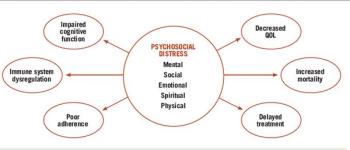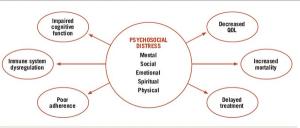
This article discusses “lessons learned” on managing psychosocial distress and the optimal strategies to promote institutions’ adoption of distress screening.

Your AI-Trained Oncology Knowledge Connection!


This article discusses “lessons learned” on managing psychosocial distress and the optimal strategies to promote institutions’ adoption of distress screening.

An estimated 219,440 new cases of lung cancer were expected in 2009, accounting for about 15% of cancer diagnoses.

Cancer is a life-altering experience, and newly diagnosed cancer patients need information throughout the course of their disease. In the 1970s, Weissman and Worden identified the first 100 days surrounding the diagnosis of cancer as an "existential plight" in which patients suddenly confront their mortality.[1] During this fragile period of fear and anxiety, the need for information is tantamount to the patient's mental well-being. Providing quality information to cancer patients and their families is an essential aspect of care, but it is not always clear how and when information should be delivered. The purpose of this article is to suggest simple steps for talking with patients about their diagnosis, assessing their understanding, and facilitating their ability to share their concerns, fears, and hopes.

Published: April 9th 2010 | Updated:

Published: February 5th 2007 | Updated:

Published: October 17th 2018 | Updated: